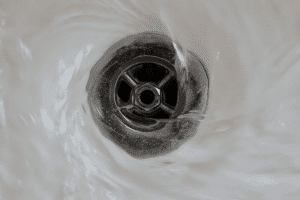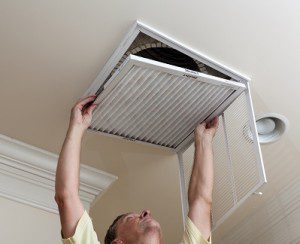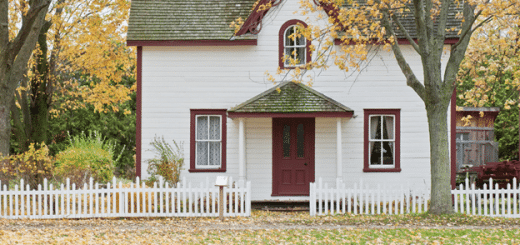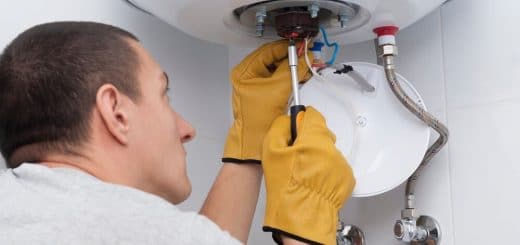Home Maintenance How-Tos Everyone Should Know
Whether you are a homeowner or you are renting, there are basic home maintenanceMaintenance is the routine care, inspection, and repair of a... More tasks that you should know how to do. Your ability to do some of these repairs in your home offers you a ton of benefits including:
- Saves you money: Hiring professionals or handymen to perform repairs costs money. When you do these activities by yourself, the only thing that you pay for is supplies. However, when you involve a professional, you incur costs on supplies and labor.
- Saves you time: Scheduling time for a handyman to come to do repairs can waste a lot of your time, especially when you have a busy schedule.
- You become self-sufficient: DIY projects help you learn new skills. Over time, you will be less likely to need someone to fix things around your home.
Of course there are other jobs that should be left to the professionals like water or fire damage restoration.
Home Maintenance DIY
Here are basic home maintenanceMaintenance is the routine care, inspection, and repair of a... More activities that you should know how to do:
1. Unclog drains
 You can feel helpless when your bathroom or kitchen sink fails to drain. While it is easy to pick up a phone and call a plumber, don’t do it! Your clogged drain problem can be sorted out with the use of a plunger. You need to have at least two plungers in your home. One for the bathroom and the other for the kitchen sink for hygiene purposes. To unclogTo unclog is to clear obstructions from pipes, drains, or eq... More your sink, you need to place a web rug on the opening of the sink overflow. Take out the nut and replace it with a rod that lacks a stopper to prevent air from escaping. The next thing is to place the plunger cup on the opening of the drain and open your tap to run the water until the rubber cup is submerged. Lastly, you need to move your plunger up and down numerous times until water begins to drain. It is recommended that once you unclogTo unclog is to clear obstructions from pipes, drains, or eq... More your sink, you flash it with warm water to clear all the debris. You can also use a plumber’s snake, p-trap, or coat hanger to unclogTo unclog is to clear obstructions from pipes, drains, or eq... More your drain.
You can feel helpless when your bathroom or kitchen sink fails to drain. While it is easy to pick up a phone and call a plumber, don’t do it! Your clogged drain problem can be sorted out with the use of a plunger. You need to have at least two plungers in your home. One for the bathroom and the other for the kitchen sink for hygiene purposes. To unclogTo unclog is to clear obstructions from pipes, drains, or eq... More your sink, you need to place a web rug on the opening of the sink overflow. Take out the nut and replace it with a rod that lacks a stopper to prevent air from escaping. The next thing is to place the plunger cup on the opening of the drain and open your tap to run the water until the rubber cup is submerged. Lastly, you need to move your plunger up and down numerous times until water begins to drain. It is recommended that once you unclogTo unclog is to clear obstructions from pipes, drains, or eq... More your sink, you flash it with warm water to clear all the debris. You can also use a plumber’s snake, p-trap, or coat hanger to unclogTo unclog is to clear obstructions from pipes, drains, or eq... More your drain.
2. Turn off the main water supply
Pipes burst often, especially if they are not well insulated during winter. Therefore, you should know how to shut off your main water supply in case of an emergency. It is also essential to know where the shut-off valve is when you want to repairRepair is the act of fixing or restoring damaged property, m... More a leak in your plumbing system. Valves come in different shapes and sizes. There are those with lever-style handles and those with wheel handles. Often, valves are located in the basement or on the outside of your house near the wall of the utility area. To turn off the water supply in your house, you just need to turn the valve in a clockwise direction and water will be shut off completely.
3. How to paint
 Painting is one of those basic things that everyone should know how to do. The secret to a sleek finish is on the preparationPreparation is the steps taken to ready a property, equipmen... More as much as it is on the painting. First, you need to assemble all the essentials ranging from paint, roller, roller pole, paintbrushes, paint tray, drop cloths, to sandpaper, rags, tape, and putty knife. The other step requires you to determine how much paint you require. It is recommended that one gallon should be used on 400 square feet of surface- do your calculations. Ensure that you do not damage your furniture by pushing everything on the center of the room and removing all pictures and artwork on the wall. Use a wooden stick to mix your paint so that it combines well. Assemble your painting roller and dip into the paint and start coloring those walls. Use a brush on the corners that your roller cannot reach. It is good to note that when painting a room, you first paint the ceilings followed by the walls. You should also always start with the larger surfaces then finish with the trims. Doing so not only saves you time but gives you a flawless finish.
Painting is one of those basic things that everyone should know how to do. The secret to a sleek finish is on the preparationPreparation is the steps taken to ready a property, equipmen... More as much as it is on the painting. First, you need to assemble all the essentials ranging from paint, roller, roller pole, paintbrushes, paint tray, drop cloths, to sandpaper, rags, tape, and putty knife. The other step requires you to determine how much paint you require. It is recommended that one gallon should be used on 400 square feet of surface- do your calculations. Ensure that you do not damage your furniture by pushing everything on the center of the room and removing all pictures and artwork on the wall. Use a wooden stick to mix your paint so that it combines well. Assemble your painting roller and dip into the paint and start coloring those walls. Use a brush on the corners that your roller cannot reach. It is good to note that when painting a room, you first paint the ceilings followed by the walls. You should also always start with the larger surfaces then finish with the trims. Doing so not only saves you time but gives you a flawless finish.
4. Fix a weather strip
Have you ever passed by a window or a door and felt cold air blowing on you? That means that you have a gap that needs to be fixed. These gaps in the windows and doors can cause your energy bill to skyrocket. Therefore, you should know how to install a weather strip on your door or window. There are two main categories of weather stripping that you can install namely the adhesive-style weather stripping and the nail-in weather stripping. To install the former, you need to simply remove the backing and place the strip on the location that you want, then press it firmly. The nail-in weather strip requires that you fasten the strip to the desired location and then punch in some holes in different places so that it sticks. In case you find this hard to do yourself, you can hire home remodel contractors who will not only help with fixing a weather strip but also with anything else that might revive the beauty of your house.
5. Replace air filters
 Replacing an air filter is one of those chores we often forget to do. But do you know that air filters can enhance the longevity of your heating and cooling system? That said, you should know how to replace your filters and do it every 30 or 90 days. Air filters are the simplest to replace! To install it, you first need to shut off your system to minimize dust from blowing in your system. The next step involves opening your vent to take out the old filter. While at it, ensure that airflow arrows point to the HVAC unit. You should then install the new filter, close the vent, and turn on your system. So, the next time you want to call a technician, think again!
Replacing an air filter is one of those chores we often forget to do. But do you know that air filters can enhance the longevity of your heating and cooling system? That said, you should know how to replace your filters and do it every 30 or 90 days. Air filters are the simplest to replace! To install it, you first need to shut off your system to minimize dust from blowing in your system. The next step involves opening your vent to take out the old filter. While at it, ensure that airflow arrows point to the HVAC unit. You should then install the new filter, close the vent, and turn on your system. So, the next time you want to call a technician, think again!
6. Patching a hole in the drywall
Holes, dings, and wall scrapes are quite common in a home. Holes occur as a result of hanging art or pictures on the wall. They can also occur as a result of slamming the door too hard or the movement of furniture around the house. When the hole is tiny, you can quickly fix it with a quick-drying spackle. However, for a slightly larger hole, you need to place an adhesive mesh patch on the hole. Use a knife to cover the patch with a lightweight joint substance. Ensure that you patch it in a crisscrossing pattern so that it sticks and blends well. You should then allow the patch to dry and assess whether it needs a second coat. Apply paint once you are done so that what wall looks even.
7. Lighting fixture replacement
Replacing or updating a light fixture is another activity that does not require you to call in a professional. The first thing that you need to do is switch off the main switch in your house for safety purposes. When the power is off, expose the wiring by removing the canopy, then unscrew all the wires labeled white, black, and copper. Once you have disconnected the wires, the old fixture will be ready to move, so take it out! Put in a new bracket and reconnect all the wires respectively. Install the new fixture and adjust its length if there is a chain and switch the power back on to test it. If it does not light up, you need to reopen it and check whether the wires are well connected.
Conclusion
Most of these home maintenanceMaintenance is the routine care, inspection, and repair of a... More duties are minor activities that you should learn how to do. When it comes to the repairs mentioned above, you should take your handyman off your speed dial. Become proactive and you will be surprised at how independent you will be!












